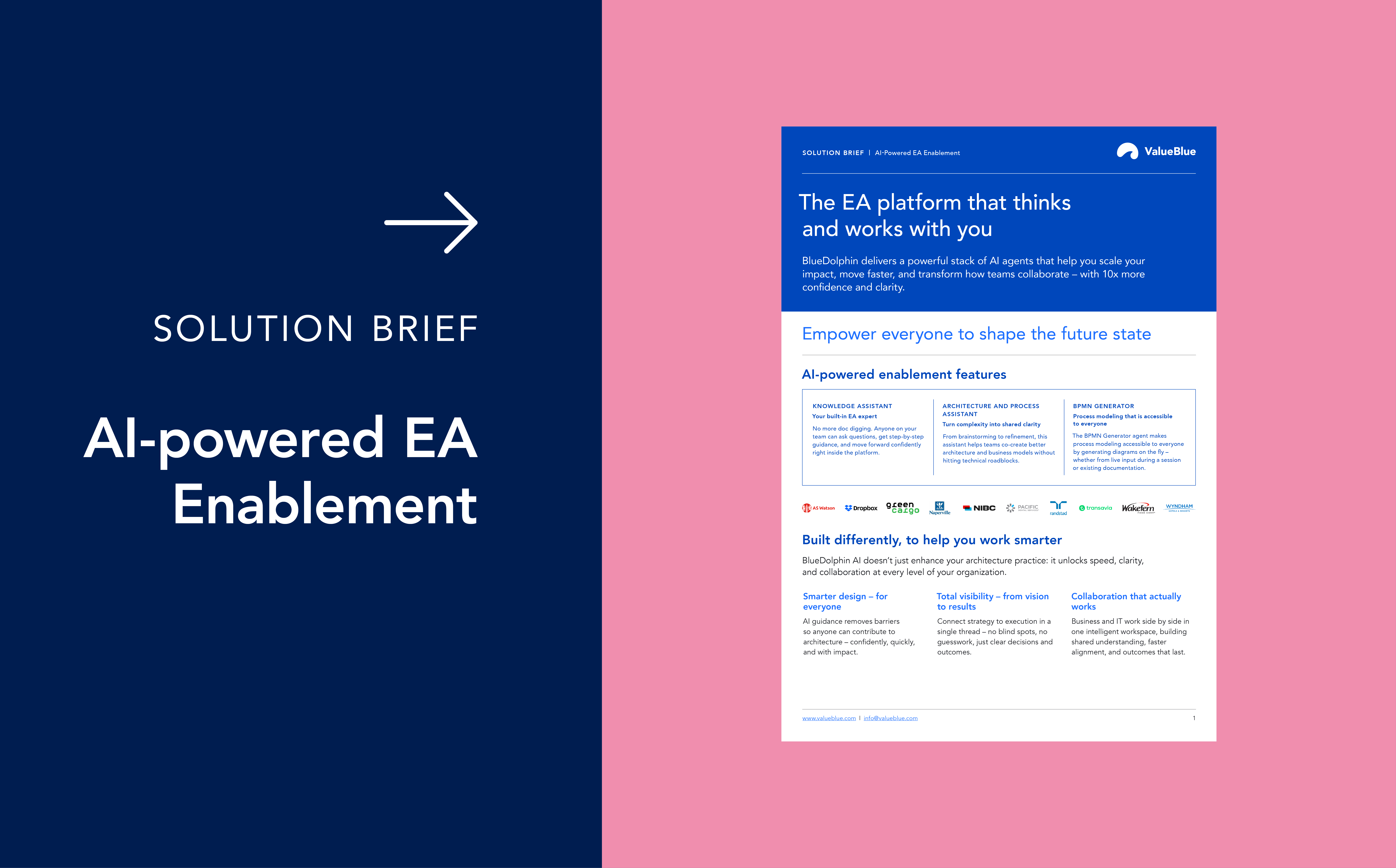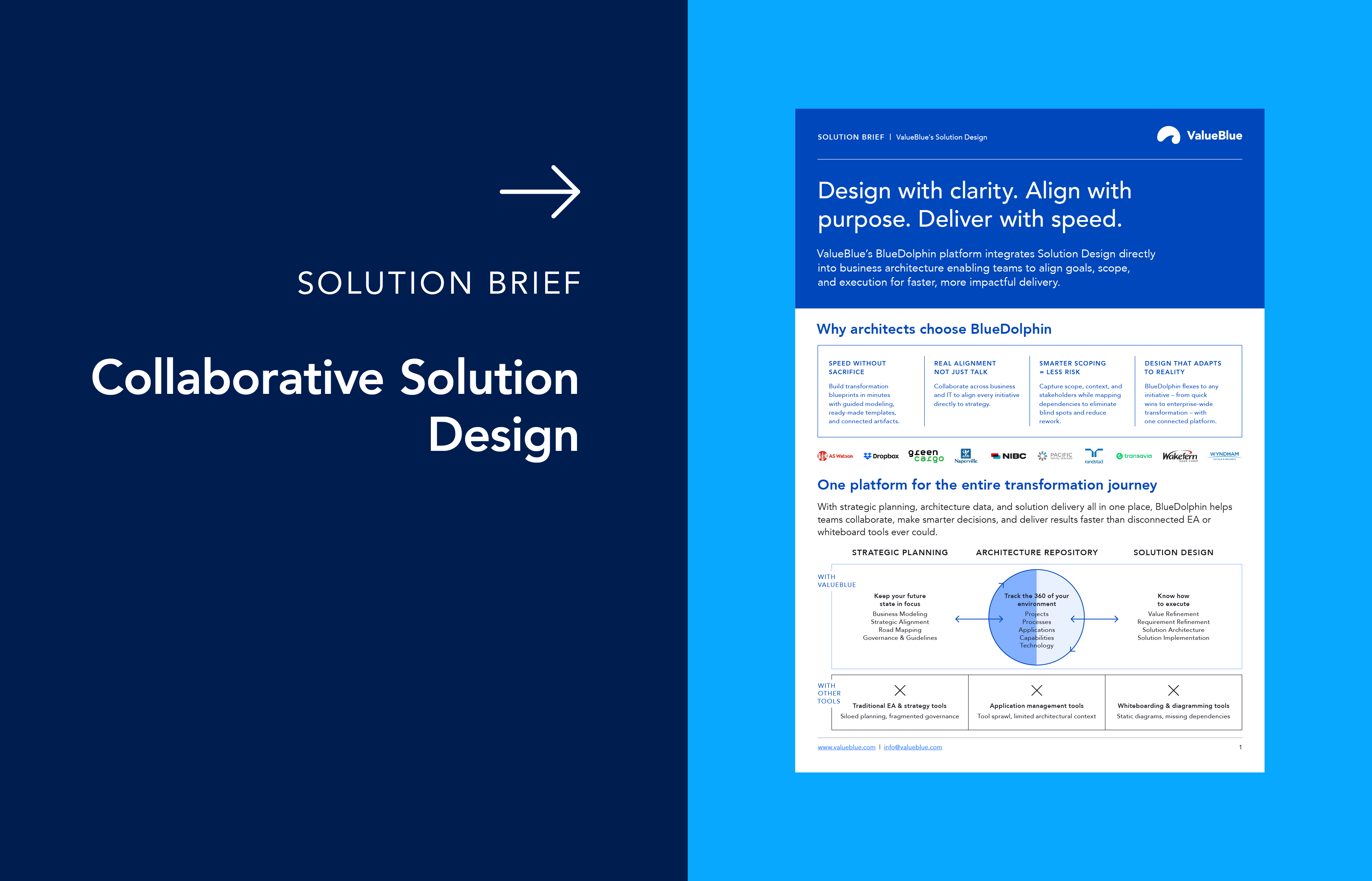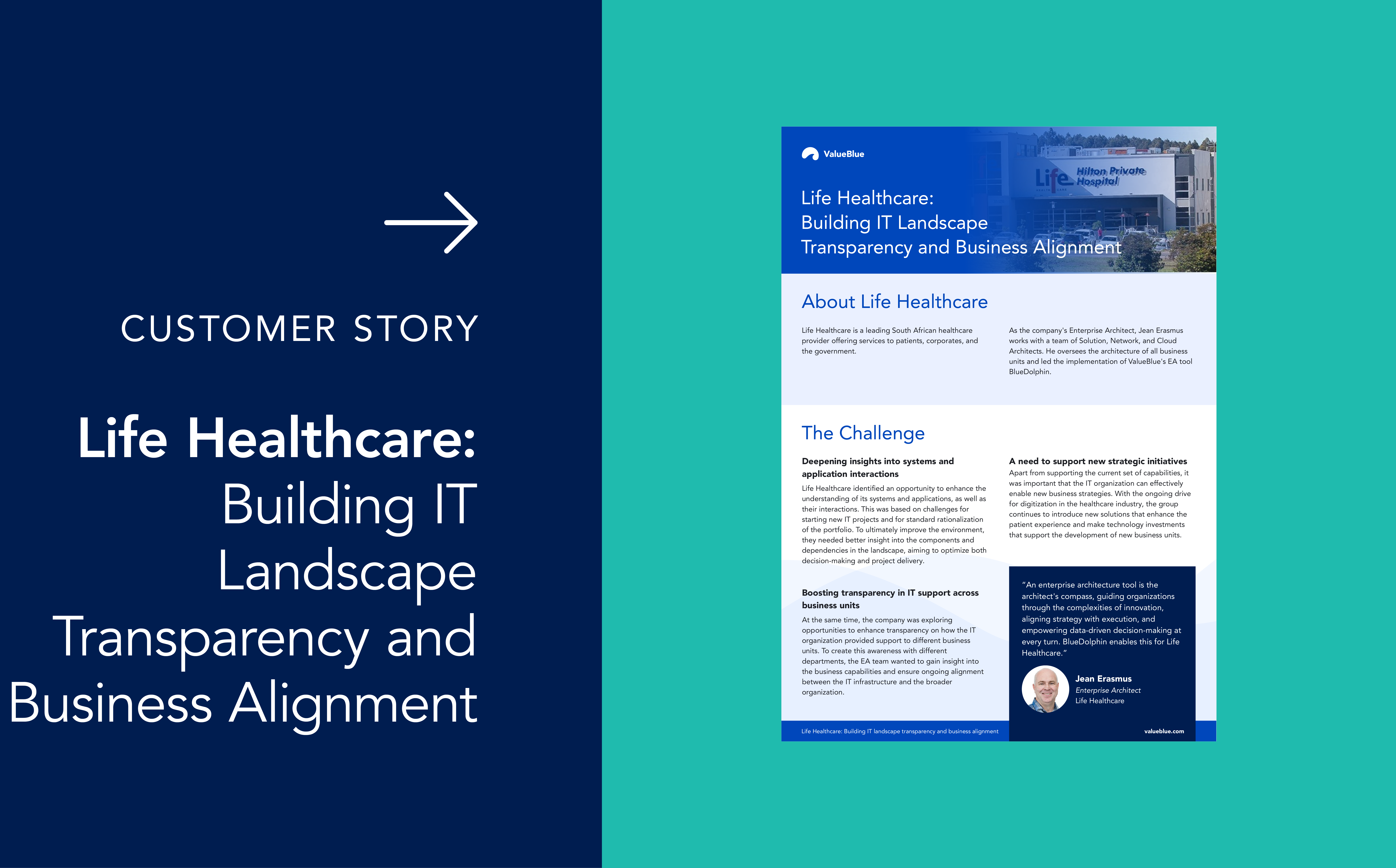Applying the C4 Model within an Enterprise Architecture Tool
Many software companies already understand and use the C4 model to structure their software architectures. It’s a proven way to break down complex systems into logical building blocks: Context, Containers, Components, and Code.
But what happens when you combine C4 modeling with the power of a centralized repository and reusable building blocks within an Enterprise Architecture (EA) tool? That’s where things get interesting, as the C4 model is combined with strategic decision-making and an understanding of dependencies, limitations, and accelerators. That’s where the real value for software development organizations emerges.
Start with what you know: The C4 Model
If you're not yet familiar with C4, we recommend reading our introductory article. But to briefly recap, its four constituent elements are:
1. Context (C1): The high-level view of your system, how it interacts with users, external systems, and the business.
2. Containers (C2): Breakdown of your system into separately deployable and executable units, such as web apps, APIs, microservices, and databases.
3. Components (C3): The internal structure of each container: modules, interfaces, and core responsibilities.
4. Code (C4): The most detailed level, showing class diagrams or source code structures – used to describe how components are implemented.
While the Code level (C4) has its place in software architecture, incorporating it into an Enterprise Architecture context can introduce unnecessary complexity. It focuses on low-level implementation details, such as classes and methods, which are best handled by development-specific tools.
Enterprise Architecture, on the other hand, operates at a higher level, where strategy, product, design, and planning converge with delivery. Its focus is on aligning business goals with architectural direction, making higher-level views (Context, Container, Component) more appropriate and effective for cross-functional collaboration.
The Central Repository: The real power move
When embedded into an Enterprise Architecture tool with a centralized repository, the C4 model becomes exponentially more powerful. This allows you to represent your current state of software architecture in a living, reusable model:
- Each Context reflects a product domain or business capability.
- Each Container maps to a microservice or application within that product.
- Each Component visualizes the internal structure, APIs, queues, logic engines, and other components.
Within each layer and across the layers relationships are established. This helps in quickly analyzing complexity or knowing who to involve during a change or sprint. This isn't static documentation. It’s a shared architectural workspace that evolves alongside your organization.
The repository enables you to elevate C4 to a higher level by capturing business goals, capabilities, and value streams and linking these to the IT landscape (e.g., your C4 model). It frames the software in terms of business objectives, stakeholders, and strategic direction.
Why this matters for development teams
Now imagine the following scenario:
Team Codephins is working on a new feature within a specific Component, part of Container X, which in turn maps to a particular product capability – your Context.
The team utilizes the central repository to quickly access the current situation. This model is then used to see immediately:
- Which other Containers or Components depend on this one.
- Who owns those neighboring elements (other teams, squads, or departments).
- How the Context impacts business logic, external integrations, or user experience.
Being able to draft this visibility from reusable building blocks quickly saves them hours (if not days) of guesswork, Slack messages, or meetings, let alone missing a dependent element while moving forward, deploying, and running into bugs or issues that could have been foreseen.
As a software organization, using an EA tool in combination with the C4 model enables you to:
- Identify stakeholders instantly.
- Understand architectural dependencies.
- Design changes collaboratively.
- Maintain customer experience and flow consistency.
- Work with business and strategic architects, not just within tech silos.
Enterprise Architecture as a collaborative platform
This is where EA tools can shine. They’re not just meant for long-term strategy, compliance, or classic APM use cases. They can actively support day-to-day delivery by:
- Giving product teams visibility into shared architecture.
- Helping solution architects hand off clear designs to developers.
- Allowing business stakeholders and analysts to validate direction and consistency.
- Creating reusable building blocks for future iterations and other projects.
You don’t need to model every line of code. You only need just enough architectural information to speed up design, reduce risk, and improve team collaboration.
The C4 Model within an Enterprise Architecture: Reuse, evolve, accelerate
When C4 modeling is embedded within an EA repository:
- Architecture becomes a living, evolving asset.
- Teams gain autonomy while remaining aligned.
- Reuse becomes systematic, not accidental.
- Change becomes faster, safer, and more informed.
So, if your organization builds software, don’t stop at drawing diagrams. Model your systems. Store them centrally. Reuse them intentionally. Above all, use architecture to accelerate innovation, not hinder it.
Tools such as BlueDolphin from ValueBlue help you do exactly that, connecting strategic goals with system design, enabling collaborative modelling, and turning architecture into a driver of change. Contact us today for a free demo!





